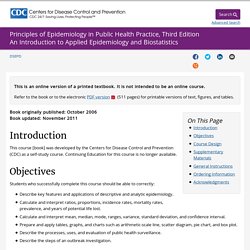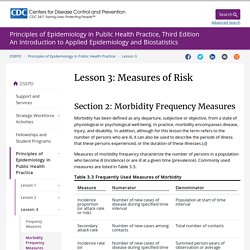

Dr Richard Shaw considers Coronavirus and invasive species - CHAP. In many ways a coronavirus is what we would consider another invasive species, novel to its new hosts and neighbours but well known to its original ones and devastating to some species or regions.

Can we learn anything from this similarity? Managing invasive species has a traditional three-tiered response namely prevention, early detection & rapid response (EDRR) followed by mitigation. These can also be categorised in order as pro-active, knee-jerk (in a good way) and responsive on a longer timescale. These principles have been tried and tested in the field of invasive species for decades. Prevention The first tier of prevention relies on forecasting or horizon scanning and works best for recidivist species with “form” that are not yet present in the area in question. Monitoring Mitigation Timescale One difference is the timescales that the various tiers of response need to operate on. Epidemic theory (effective & basic reproduction numbers, epidemic thresholds) & techniques for analysis of infectious disease data (construction & use of epidemic curves, generation numbers, exceptional reporting & identification of significant clusters)
We are currently in the process of updating this chapter and we appreciate your patience whilst this is being completed.

Communicable disease control is considered in detail in a separate section of the MFPH Part A syllabus – See Section 2G: Communicable Disease. This page covers the basic principles of epidemic theory. Basic reproduction number (R0) The basic reproduction number (R0) is used to measure the transmission potential of a disease. Principles of Epidemiology: Home. This is an online version of a printed textbook.

It is not intended to be an online course. Refer to the book or to the electronic PDF versionCdc-pdf (511 pages) for printable versions of text, figures, and tables. Book originally published: October 2006 Book updated: November 2011 This course [book] was developed by the Centers for Disease Control and Prevention (CDC) as a self-study course.
Continuing Education for this course is no longer available. Students who successfully complete this course should be able to correctly: This course covers basic epidemiology principles, concepts, and procedures useful in the surveillance and investigation of health-related states or events. Neherlab@biozentrum. Principles of Epidemiology. Section 2: Morbidity Frequency Measures Morbidity has been defined as any departure, subjective or objective, from a state of physiological or psychological well-being.

In practice, morbidity encompasses disease, injury, and disability. In addition, although for this lesson the term refers to the number of persons who are ill, it can also be used to describe the periods of illness that these persons experienced, or the duration of these illnesses.(4) Measures of morbidity frequency characterize the number of persons in a population who become ill (incidence) or are ill at a given time (prevalence). CDC Vital Statistics Reporting 2020.4. A pandemic tabletop exercise. Event 201 simulates an outbreak of a novel zoonotic coronavirus transmitted from bats to pigs to people that eventually becomes efficiently transmissible from person to person, leading to a severe pandemic.

The pathogen and the disease it causes are modeled largely on SARS, but it is more transmissible in the community setting by people with mild symptoms. The disease starts in pig farms in Brazil, quietly and slowly at first, but then it starts to spread more rapidly in healthcare settings. When it starts to spread efficiently from person to person in the low-income, densely packed neighborhoods of some of the megacities in South America, the epidemic explodes. It is first exported by air travel to Portugal, the United States, and China and then to many other countries.
Although at first some countries are able to control it, it continues to spread and be reintroduced, and eventually no country can maintain control. The scenario ends at the 18-month point, with 65 million deaths. Great Barrington Declaration – An open letter and declaration from public health academics and professionals. Pandemics Explained – unlocking evidence for better decision making. MEDIALIST. Collective Crisis Intelligence.
Is America Ready for a Global Pandemic? Editor’s Note:The Atlantic is making vital coverage of the coronavirus available to all readers. Find the collection here. Image above: Workers at the University of Nebraska Medical Center’s biocontainment unit practicing procedural safety on a mannequin At 6 o’clock in the morning, shortly after the sun spills over the horizon, the city of Kikwit doesn’t so much wake up as ignite. Loud music blares from car radios. Shops fly open along the main street. By late morning, I am away from the bustle, on a quiet, exposed hilltop some five miles down a pothole-ridden road. To hear more feature stories, see our full list or get the Audm iPhone app. Emery Mikolo, a 55-year-old Congolese man with a wide, angular face, walks with me.
Read: The dos and don’ts of ‘social distancing’ The Congo—and the world—first learned about Ebola in 1976, when a mystery illness emerged in the northern village of Yambuku. In 1995, it reemerged in Kikwit, about 500 miles to the southwest. These include forgetfulness. Network Science. Network Science by Albert-László Barabási. Network Science Institute at Northeastern University.
Monster Models. Virology. Zoonology. Ring Around Rosy. MEDICA. SARS-CoV-2. SARS-CoV-2 Studies. SARS-CoV-2 Vaccine. TESTING US. Reëntry Débâcles. Bell Tolls. COVID-19. COVID-19 Crux. COVID-19 Crossroads. PLATEA. UTILIS. PANDEMOCRACY. Pandemic Problems.